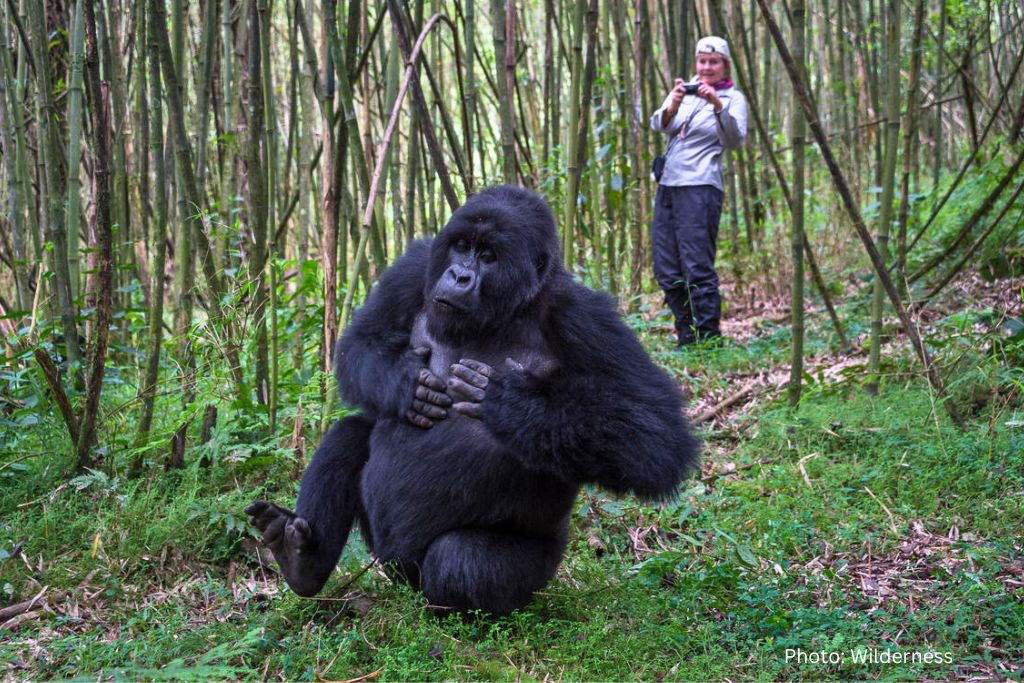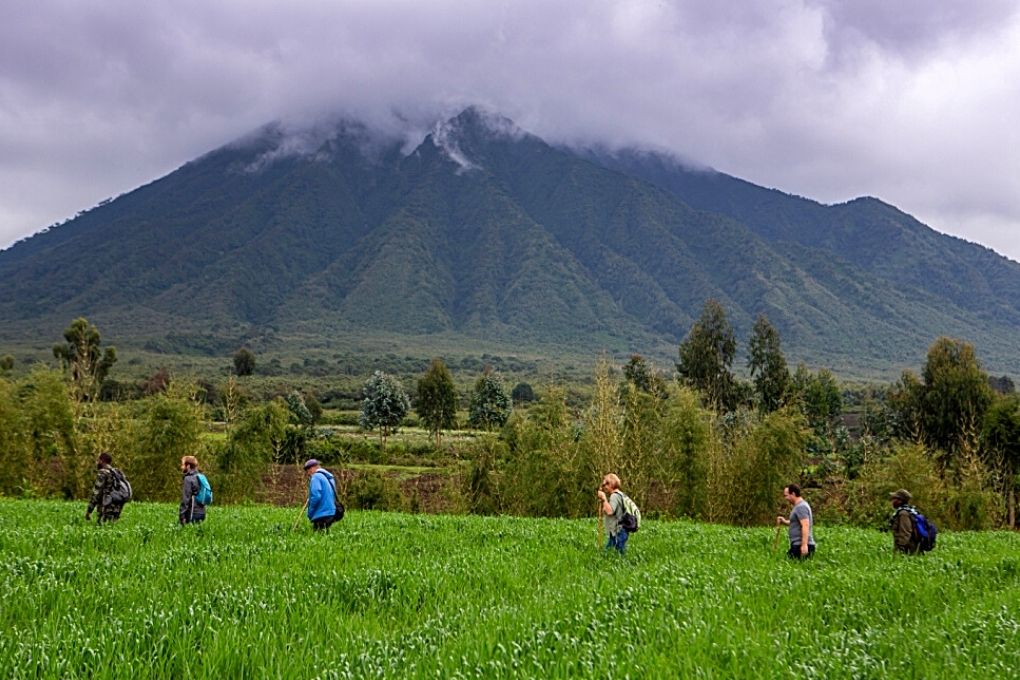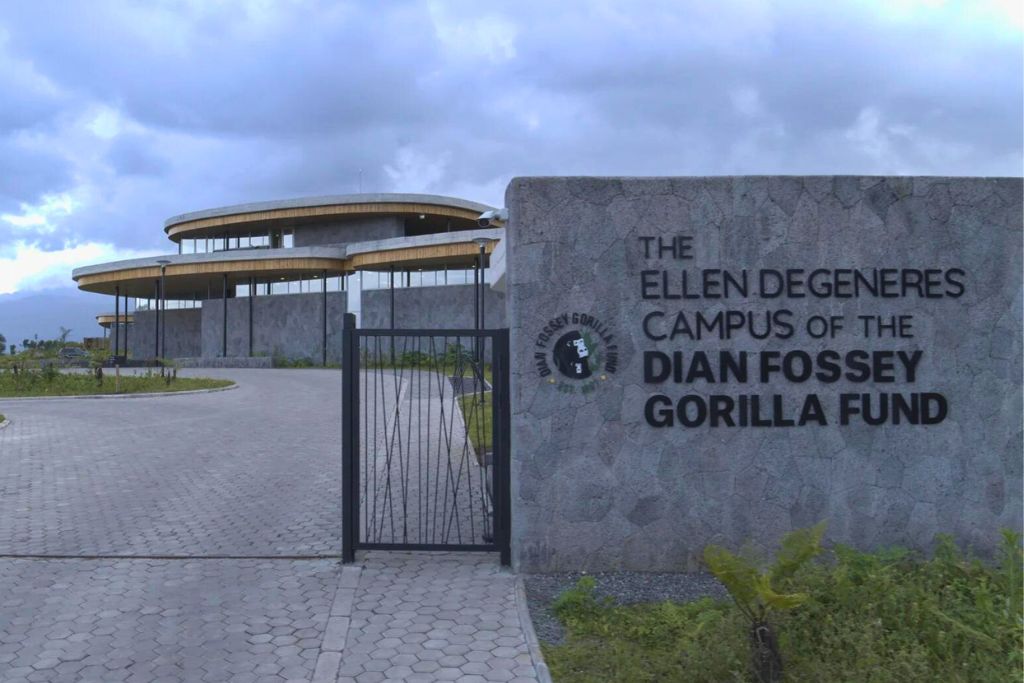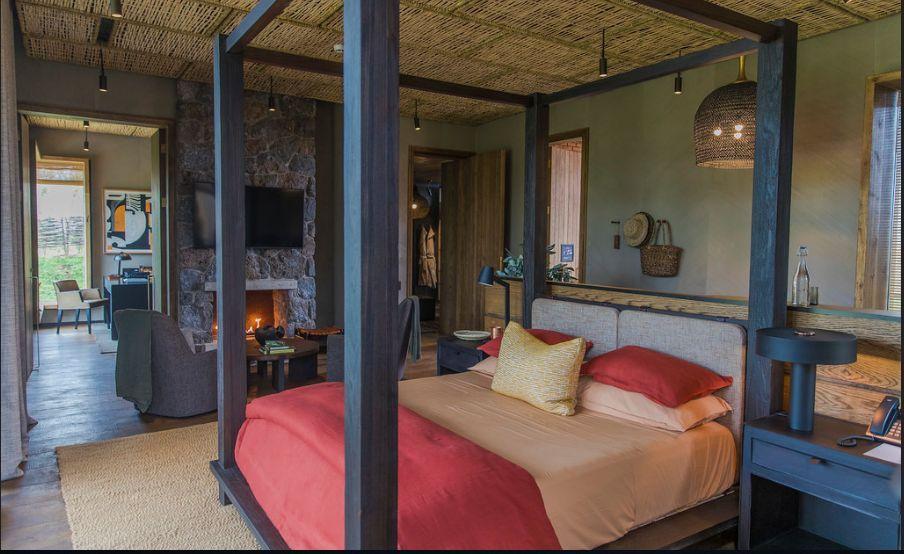
Mountain Gorilla Photography Safari
Observing baby gorillas or silverbacks in the wild is a remarkable spectacle that leaves a lasting impression for a lifetime. Witnessing these incredible creatures in their natural habitat, engaging in their day-to-day routines like feeling, grooming each other, playing, mating, and fending for infants evokes a sense of wonder and joy. To preserve this moment’s beauty and clarity, mastering the art of photographing mountain gorillas requires a comprehensive understanding of the techniques and tricks involved. Book Now
 Mountain Gorilla photography can be challenging even for experienced photographers. After all, you are balancing between light, constant motion, and focus while the Giant Apes are endlessly moving and displaying different behavior. This coupled with the adrenalin pumping through your body because of the spectacularly awesome spectacle in front of you: Holy crow, that’s a silverback or a baby gorilla! Gotta get a photo of that!
Mountain Gorilla photography can be challenging even for experienced photographers. After all, you are balancing between light, constant motion, and focus while the Giant Apes are endlessly moving and displaying different behavior. This coupled with the adrenalin pumping through your body because of the spectacularly awesome spectacle in front of you: Holy crow, that’s a silverback or a baby gorilla! Gotta get a photo of that!
That’s how most photographers feel every time they head into the jungle to search for the endangered mountain gorillas. Visitors normally ask us for mountain gorilla photography tips, and here are some of the things to bear in mind before heading out with us into the jungles to search for the Giant Apes.
USING THE BEST EQUIPMENT FOR MOUNTAIN GORILLA PHOTOGRAPHY.
It is recommended to use a DSLR Camera or a mirrorless camera for best results during your mountain gorilla photography safari, much as the “point-and-shoot” cameras such as COOLPIX also work perfectly. Choose something with a decent frame-per-second rate for smoother captures. Additionally, if you are using a memory card with a higher download speed; the camera’s buffer won’t suddenly stop amid the action. We recommend a minimum download speed of 90MB per second or higher.
CHOOSING THE BEST SETTINGS.
Shutter and Aperture.
To effectively capture most mountain gorilla routines like feeding, playing, climbing tree branches (especially infants), and grooming each other, it is recommended to maintain your camera’s shutter speed at a minimum of 1/500 or faster.
One of the tricks we give our visitors is to switch to con tenuous shooting mode to capture multiple shots when mountain gorillas merge from the dense forest rather than repeatedly pressing the shutter release. In so doing, you will have several good shots to choose from.
If you’re shooting in manual mode or Aperture Priority, you will have to remarkably raise your ISO if the natural environment appears dark and moody to attain a perfect shutter speed.
If you feel intimidated by the manual mode, we recommend using “shutter priority” mode, which lets you set the shutter speed while letting the camera automatically adjust all other settings accordingly.
Vibration reduction.
We normally recommend activating the VR Feature when using DSLR cameras with Vibration Reduction (VR) Lens. If your lens makes it possible to choose between active and normal modes, and you’re photographing a semi-habituated gorilla family (during the Gorilla Habituation Experience) opt for the active setting. This compensates for the constant movement of mountain gorillas. However, if you’re shooting a fully habituated gorilla family, you can opt for the normal setting.
PACKING ACCESSORIES AND BACKUP EQUIPMENT.
Having accessories and backup equipment will make your mountain gorilla photography safari memorable and we recommend having extra batteries and memory cards on hand to avoid missing any unforgettable moments. Nothing is more frustrating than a drained battery or a full memory card cutting in on a planned photo session. Also, when choosing optimal gorilla trekking equipment, don’t forget to include a lens hood and cleaning kit for combating forest mist, a polarizing filter for minimizing sun glare, and spare batteries.
COMBATING CHANGING WEATHER CONDITIONS.
Interestingly, weather conditions can drastically vary during your gorilla trekking trip, potentially impacting your camera settings. During sunny conditions, there’s a possibility of slight over-exposure, especially in reflective areas. If you are using manual mode, this can be addressed by slightly increasing the shutter speed.
For cloudy conditions (whereby the sun intermittently emerges and disappears), we recommend Auto ISO on your camera. This makes it possible for the camera to adapt the ISO according to the available light, readjusting as the sun appears and disappears. Book Now



